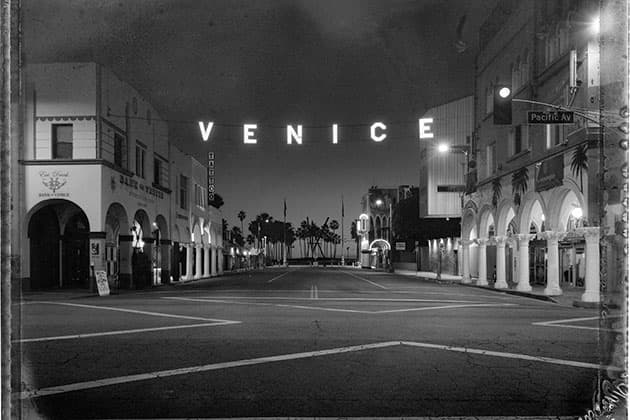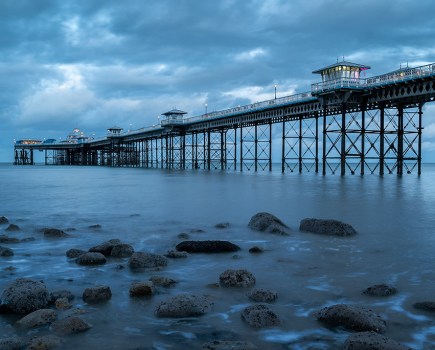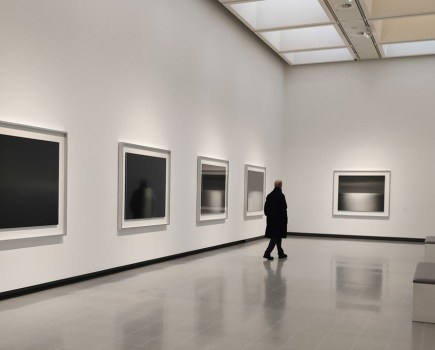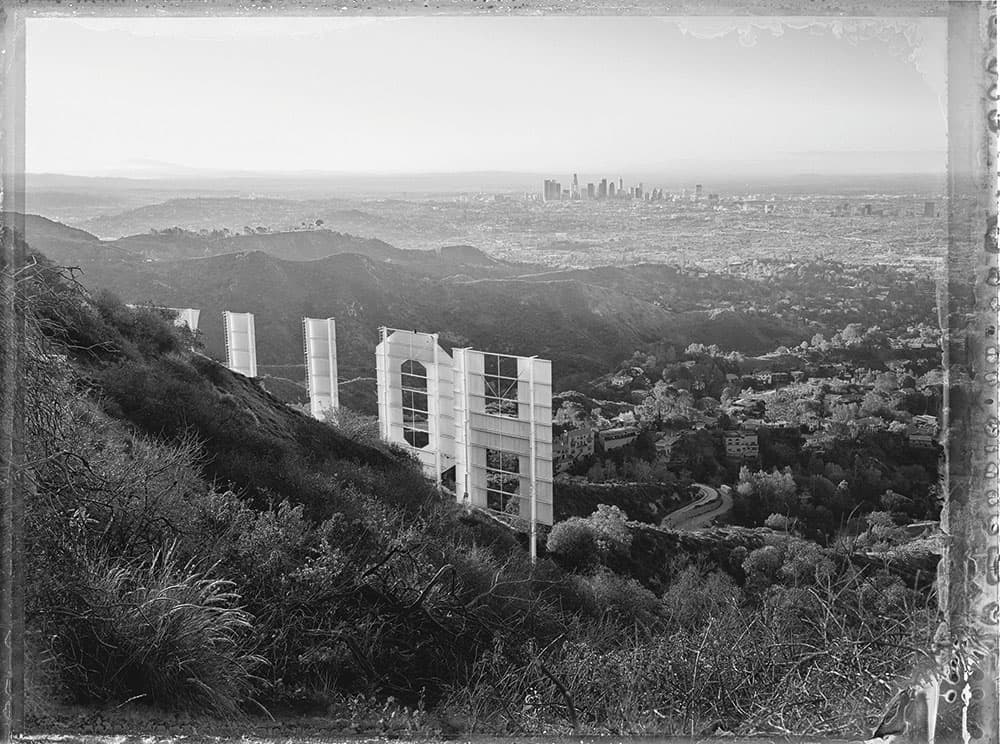
Hollywood Sign I, Hollywood Hills, 2017, Credit: Christopher Thomas
The documentation of the American landscape is a firmly established practice in American photography, both past and present. The city of New York, for example, has found itself subject to the scrutinising eyes of many artists, including Helen Levitt, Richard Sadler and Matt Weber. Equally, Stephen Shore and Walker Evans have amply documented the often mundane suburban and rural slices of life that make up large swathes of the country. The most famous of these figures is, of course, Ansel Adams whose images of California have become influential to generations of artists. However, within the state of California there lies a city that despite its fame remains largely unexplored through the eyes of contemporary photographers.
It may seem odd to suggest that Los Angeles is photographically under-represented, but a look through the medium’s history reveals it has been somewhat overlooked as a place of visual interest, though Julius Shulman’s The Birth of a Modern Metropolis is a work worth seeking out. This under-representation makes sense in many ways. Despite its beautiful architecture and light, Los Angeles is a city designed to be viewed on the fly; it’s a landscape often viewed as a blur through the car windscreen as commuters drive from home to work and back again. To travel through LA on foot is almost unheard of (the writer Will Self tried it once or twice without much success). Photography, particularly landscape photography, requires studied meditation, time and patience. It requires legs.
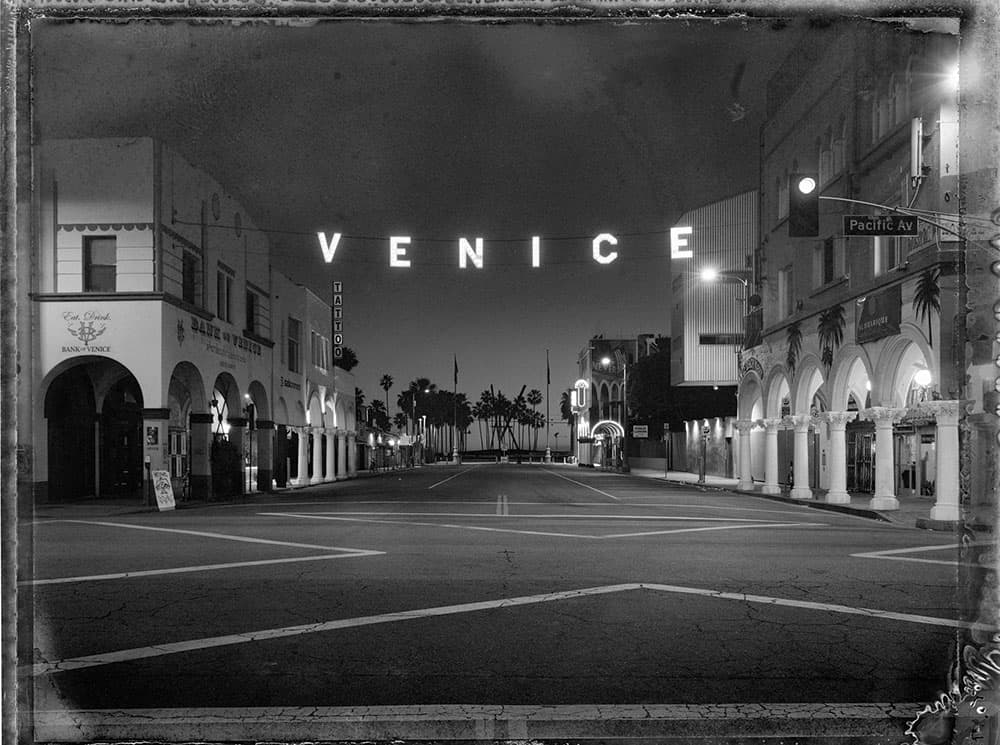
Venice Sign, Venice, 2017. Credit: Christopher Thomas
In his new book, Lost in L.A., a collection of ‘city portraits’, shot on a Linhof 4×5 large-format camera and Polaroid Type 55 black & white film, Munich-born photographer Christopher Thomas noted this dearth of documentation and decided to get out and reveal the splendour of a city that, as many have noted, seems to exist in a place between dreams and consciousness.
“Back when I started photography, I was working on a lot of advertising photography, particularly car shoots,” says Thomas. “Eventually, I wanted to do something to balance that out and that’s when I started producing large-format portraits of my hometown of Munich. Later on, I expanded my scope and that was when I continued these portraits through my images of New York, Paris and Venice. What’s interesting about those cities is that they are all locations largely defined by their iconic buildings, such as the Empire State Building in New York, and the Notre Dame Cathedral in Paris. Los Angeles is a little different.”
Continues below…
[collection name=”small”]
Thomas had already been travelling back and forth between Munich and Los Angeles several times a year over three decades while working as an advertising photographer. During one of his later trips he decided to apply the ideas developed over his previous projects to LA. So, in 2014, he jumped in a campervan and began the first of several month-long investigations of the City of Angels.
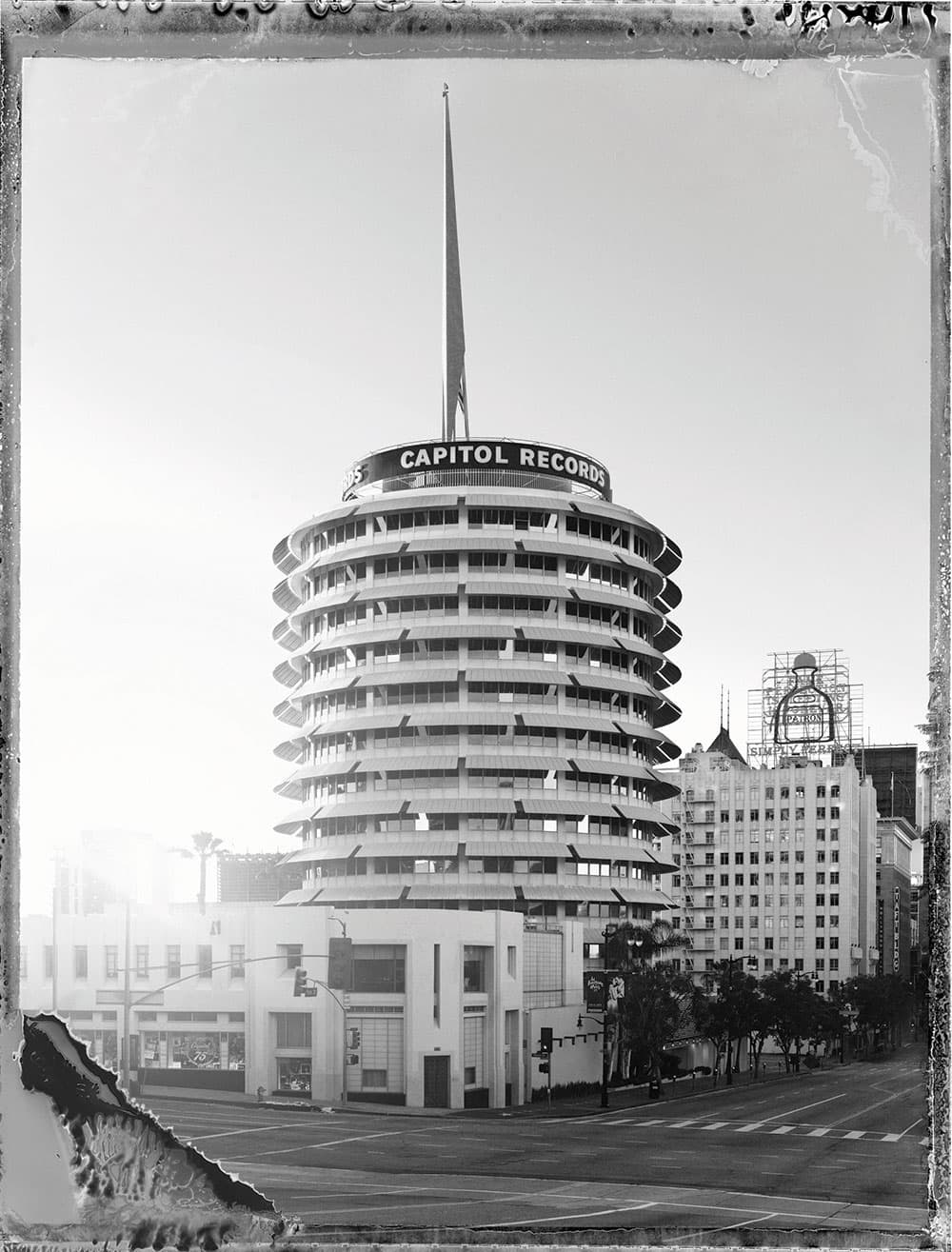
Capitol Records Building, Los Angeles, 2016. Credit: Christopher Thomas
A different city
“Los Angeles, compared to the cities I have previously shot, lacks the kinds of immediately recognisable architecture and landmarks that form the make-up of many iconic cities,” says Thomas when I ask him why he was drawn to the city. “The most obvious one is the Hollywood sign, although not many people know that it began life as a real-estate advertisement.
“What really drew me to LA was the challenge of finding the hidden beauty of the city. I was also keen to find a view that was distinct from the clichés of the beaches and girls on roller skates. I was much more interested in the quiet and hidden parts of the city.”
During his initial excursions, Thomas prepared extensive research notes, where he marked down notable architecture, possible times of day to shoot, best times of year, ideal weather, position of the sun and even where to park.
One of the most notable and surprising aspects of the images, aside from the gorgeous and immediately recognisable bleeding Polaroid edges, is the fact that they are devoid of people and vehicles. It’s a quality that makes the images appear timeless, as though they have been dug up from the earth from an unknown period of history.
“I’ve always admired the old photography of European cities taken around 1900,” says Thomas. “The images were interesting for their structured clearness and peacefulness. In those images, you just see the city. There are no people, no horse carriages, nothing. Just the city as it is. The reason for that, as you may have guessed, is the fact that these photographers, due to technical necessity, were working with long exposures, which were often five to ten minutes long. So, while there were people present in the areas in which they were shooting, they vanished within the long-exposure. I really wanted to continue that tradition because I was seeking to capture the true essence of LA. That involved me making sure that people and cars were not present in the frame by shooting long exposures. People became invisible within the frame.
“On a technical level, I was able to reduce things as much as possible by shooting large-format black & white Polaroid. Eschewing colour in some ways helps to take the images outside of time. Furthermore, removing colour makes the images quieter and helps me and the viewer to hone in on exactly what I want to show in terms of the graphic, geometric forms of the architecture. I also tended to shoot quite early and sometimes at night. This all required a great deal of patience because there could often be obstacles to work around, such as someone parking their car in front of a building, the weather not being quite right, or the fact that a building’s lights weren’t switched on during a night shoot.”
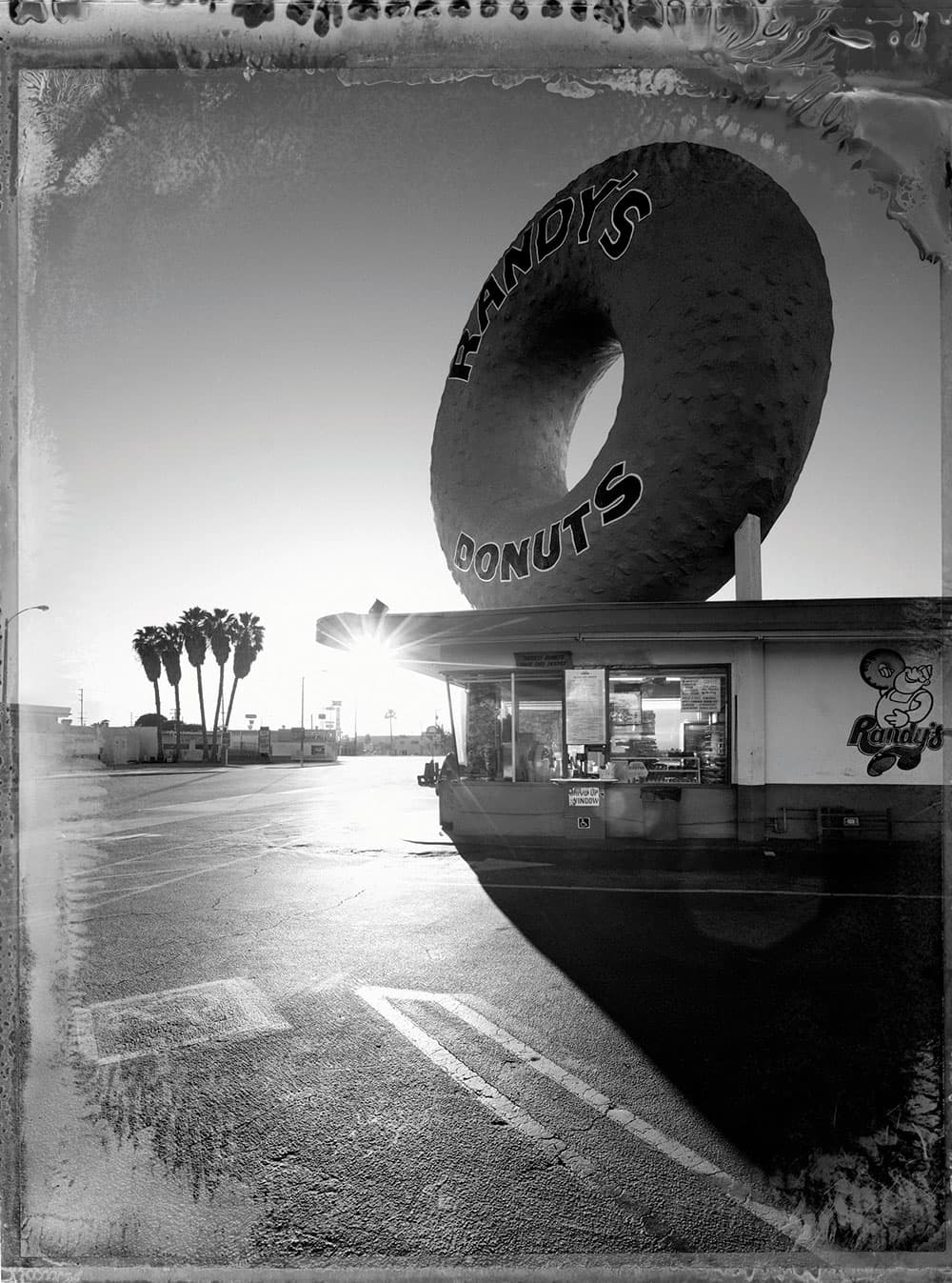
Randy’s Donuts, Inglewood, 2017. Credit: Christopher Thomas
While Los Angeles does not perhaps contain landmarks that immediately spring to mind, that’s not to say the city is devoid of distinctive locations. The city does after all host restaurants such as the world’s oldest McDonald’s, Norms, Randy’s Donuts, as well as Sleeping Beauty’s Castle in Disneyland, Santa Monica Beach, various gas stations, piers and the more-than-impressive Walt Disney Concert Hall. The city is also a canvas for futurist Googie buildings, such as the Capital Records building and Theme Building. The fact that all of the images were shot on Polaroid offers the project a kind of taxonomic feel. Lost in L.A. feels like something that sits between a survey and portrait project. In fact, all of these locations are captured under the banner of what Thomas terms ‘city portraiture’.
“When I shoot a portrait of a person, I’m attempting to reveal the character and the soul of that person,” he says. “There’s no reason not to apply that same notion to a place, a city. Los Angeles has its hidden treasures and it possesses a kind of beauty that’s not revealed on first sight. It has an extensive variety of ‘faces’. By capturing the vast diversity of locations, I’m able to bring to light the huge diversity of the city’s character.”
That diversity extends to the weather. When you think of Los Angeles, you think of vast blue skies and scorching sun. But in Thomas’ work, we find a Los Angeles at odds with our preconceptions.
“I really had a great deal of luck with the weather when I was in Los Angeles at the beginning of this year,” says Thomas. “The weather was wild, wet and foggy. In some of the images in the book and exhibition, you’ll see great dramatic skies such as the one over Coasters Drive-In or clear skies marked by brushstrokes of cirrus cloud over the Walt Disney Concert Hall.”
A great success of any project of landscapes and cityscapes lies in its ability to surprise viewers who are familiar with the locations. We can all become blasé with our surroundings, walking with our heads down, our ears plugged with music. It’s a distinctly modern malady.
“There’s always one common reaction I get from people either viewing my books or seeing the exhibitions,” says Thomas. “And it’s that they say they live around the corner of the location and pass by it every day but they have never seen it in this way before. Despite the familiarity of the location, it’s almost like they’re seeing it with fresh eyes. That’s the kind of endorsement for my work that I really appreciate.”
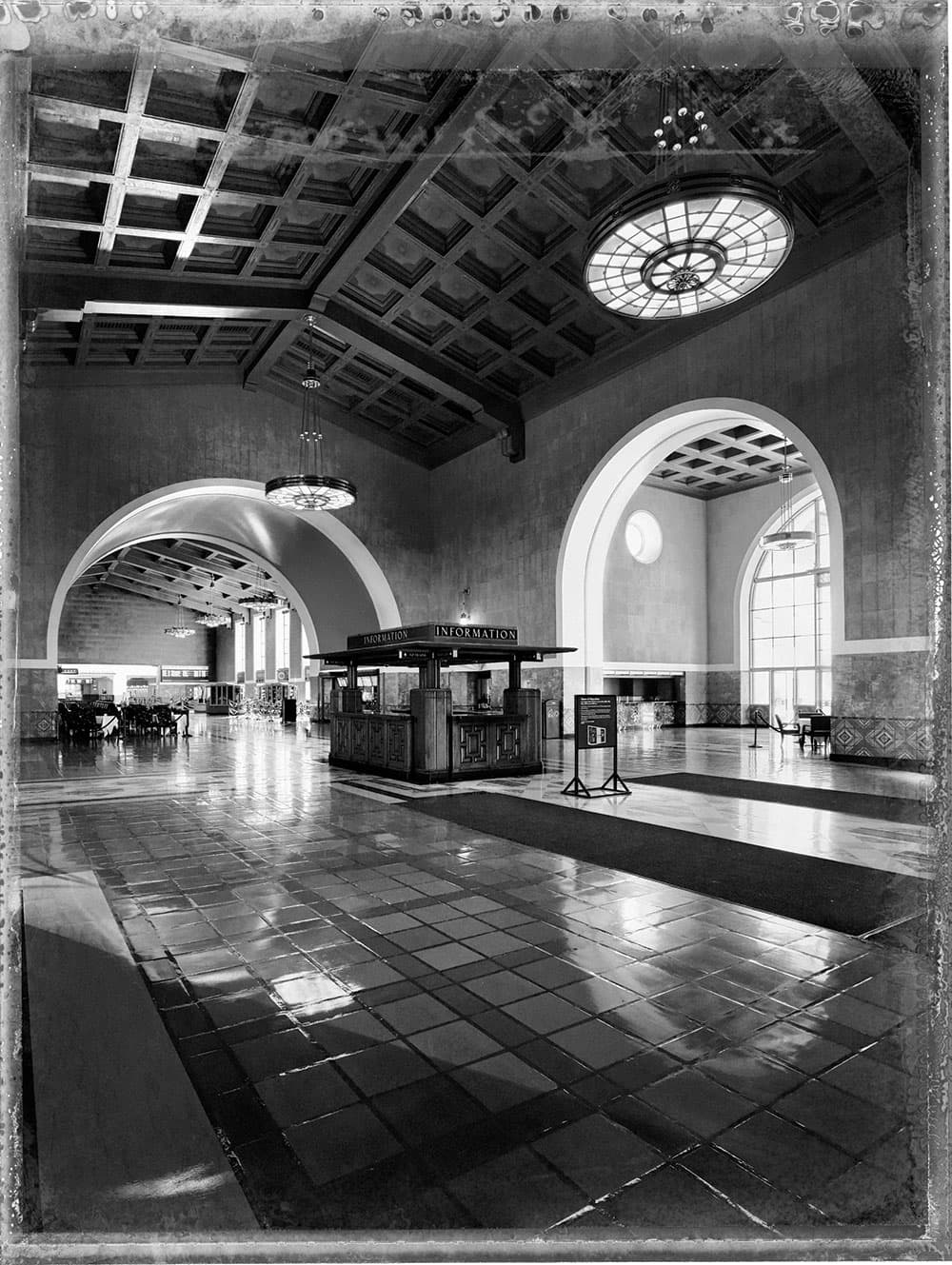
Union Station II, Los Angeles, 2017. Credit: Christopher Thomas
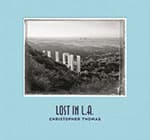
Lost in L.A. by Christopher Thomas is published by Prestel, £39.99, ISBN 978-379 13-837-5-0
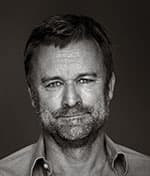
Christopher Thomas graduated from the Bavarian State Teaching Institute for Photography and has received a number of international awards as a commercial photographer. As an artist, he has established a reputation through his city portraits and each series is accompanied by a publication.

